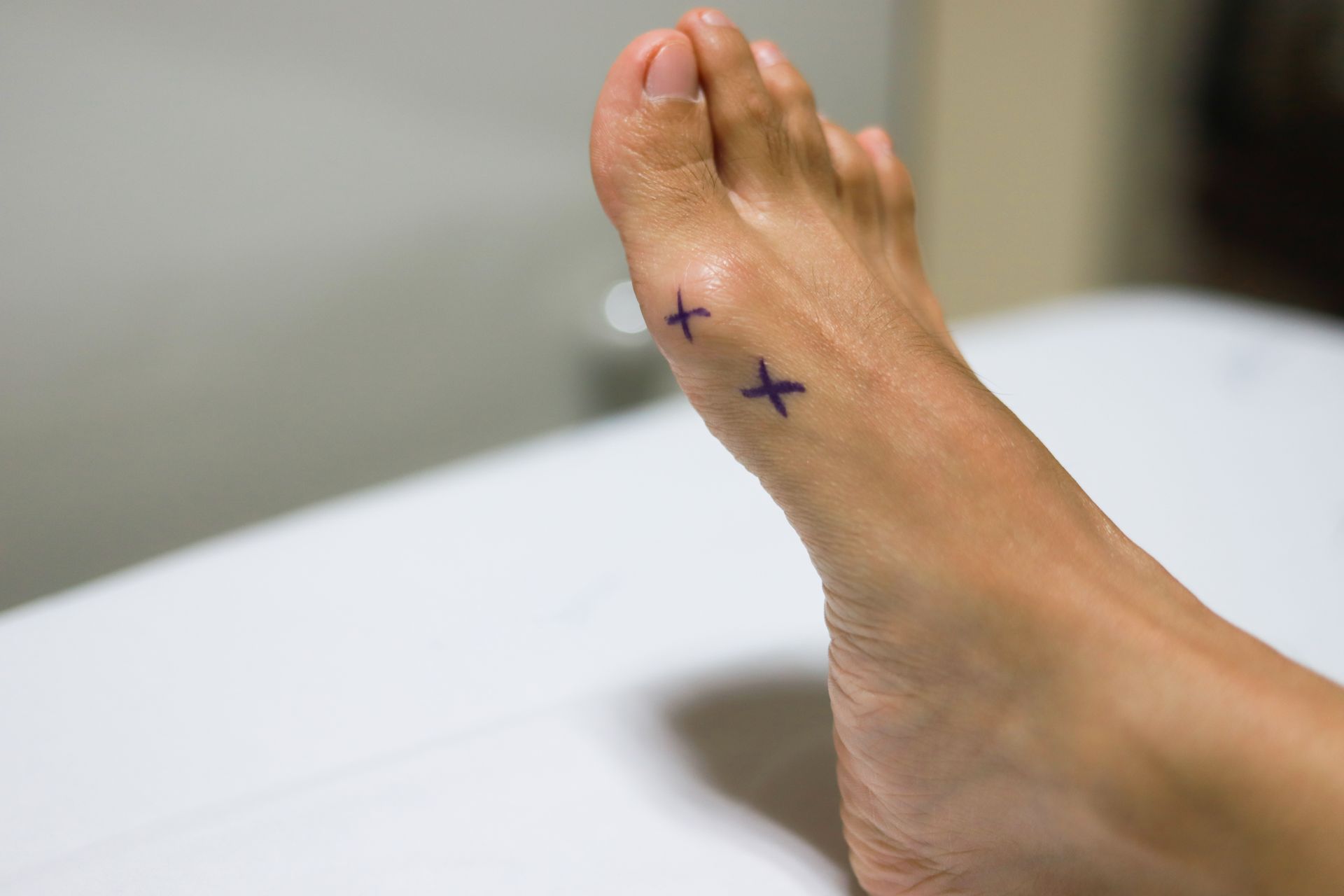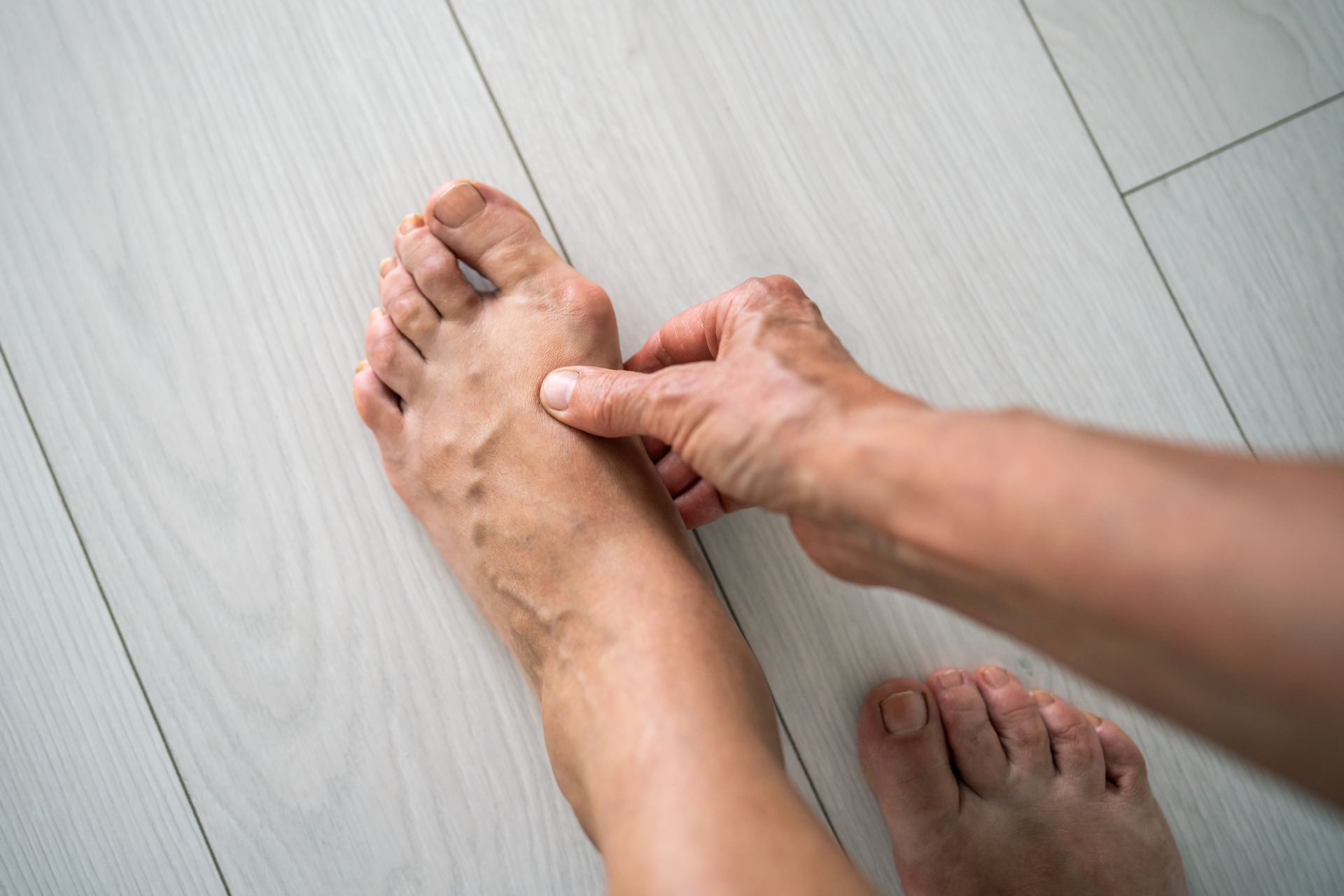Baton Rouge Bunion Patient FAQs
I receive many questions about bunions in my office. Here are answers to the most commonly asked questions:
What is a Bunion?
The term bunion is used to describe the bony bump commonly seen at the base of the big toe joint. A bunion is not just a lump of bone. In the development of a bunion, the big toe actually leans towards the second toe, and the bone in front of the big toe (the first metatarsal) shifts away from its natural position. This shifting or buckling of the two bones creates the visible bump.
What Causes a Bunion?
Many bunions are inherited. And while you might not inherit the bunion itself, often what is inherited is a foot type that is more susceptible to forming a bunion. Flexible feet and flat feet are common examples. Certain shoes may squeeze the toes together creating pain and irritation but doesn’t usually create the bunion. Bunions are more common among women than men.
What are the Symptoms of a Bunion?
- Pain (either sharp or aching)
- Redness and swelling
- Burning near the big toe joint
- Decreased motion in the big toe joint (can be a sign of arthritis)
How do I Know if I Have a Bunion?
Bunions are visually apparent. They can be seen as bump near the big toe joint. The big toe often leans into the second toe and sometimes the big toe overlaps or underlaps the second toe as a bunion progresses. Typically, a bunion will develop gradually over a period of years. Interestingly, size of bunion does not always correlate with level of pain. Shoes with a heel exceeding 2 inches and shoes with a narrow, tapered toe box will tend to aggravate a bunion. Activities that put extra pressure on the front of the foot will also aggravate a bunion.
X-rays and an examination by an expert will help to diagnosis the size and severity of a bunion. From there an individual treatment plan can be formulated.
Do All Bunions Require Surgery?
Technically, the only way to “fix a bunion” is a surgery to correct the position of the toe. However, only a small percentage of people with bunions require surgery. Many patients get relief from ice, shoe changes and occasional anti-inflammatories. Arch support can help realign the arch, taking pressure off a bunion. A number of over-the-counter pads and cushions for bunions are available. Unfortunately, the pads and splints that claim to straighten the toe position are usually ineffective. Some of the cushions and gel pads can give some relief, but patients complain that they take up space in the shoe and exacerbate the problem.
When is Bunion Surgery Indicated?
Our goal is always to avoid surgery if possible. Bunion surgery is reserved for patients who have significant pain at the big toe joint. As a bunion worsens, it can be increasingly difficult to find comfortable shoes. Many patients requesting bunion surgery have pain with regular walking and recreational physical activities.
What are the Risks of Bunion Surgery?
Bunion surgery is the most common surgery that I perform annually. Satisfaction rates with bunion surgery are high, exceeding 90% with good-to-excellent results. Advanced surgical techniques have improved bunion surgery and made it a safer, more reliable option for patients. However, risks do exist. There is a 1-2% chance of infection with any surgical procedure. Recurrence has decreased in recent years and is estimated between 5-8% following surgery. (I feel like the actual recurrence rate is lower than this, but the point is that, although it doesn’t happen often, it can occur). Titanium pins or screws are usually placed in the foot to stabilize the bunion correction during surgery. These screws do not set off metal detectors and rarely require removal. Numbness around the incision and stiffness in the joint are also rare but potential risks of bunion surgery.
Do I have to be put to Sleep for Bunion Surgery?
When I perform bunion surgery, it is done as an outpatient surgery that typically takes 45 minutes to an hour. Patients go home the same day, and the surgery is performed at an outpatient surgery center. For anesthesia, I use a method called IV sedation which is similar to the anesthesia experienced with a colonoscopy, often called a “twilight sleep.” Using sedation instead of general anesthesia requires less anesthesia medicine, which decreases post-operative nausea and grogginess. Sedation still insures that a patient will be comfortable and pain-free during the surgery. I infiltrate a long-acting local anesthetic during the surgery as well to keep you comfortable on your way home.
What does Bunion Surgery Cost?
Bunion surgery is a covered surgery by commercial and federal insurance carriers. Sometimes a policy will state that bunion surgery is not covered, but that bony correction of Hallux abducto valgus is covered. This is a confusing way of saying that painful bunions requiring surgical correction will in fact be covered. Individual benefits for bunion surgery can vary from one commercial plan to another. That is why our office has dedicated “pre-certification” personnel to help you find answers to all financial questions before making a decision.
Will I be able to Walk after my Bunion Surgery?
The majority of bunions requiring surgery are deemed mild to moderate in size on x-ray examination. These bunions can be done with a technique that allows protected weight-bearing in a post-operative boot. Crutches or a rolling knee scooter can be used to take pressure off of the foot if desired.
For patients whose bunions are deemed severe in size on x-ray examination, a period of 6 to 8 weeks of no weight on the surgical foot may be necessary for proper healing.
Can You Fix both Bunions at the Same Time?
For patients with mild-sized bunions, surgery can be performed on both feet at one time, but I often discourage this because it makes the recovery much more difficult on the patient. It is difficult to take pressure off of both feet at once and perform necessary daily activities. It is much easier on patients to stagger the feet by two weeks to allow the first foot to partially recover. Many patients with painful bunions on both feet allow the first foot to heal completely before having the second foot operated on.
If you have questions about bunions and potential treatment options, it is necessary to schedule an appointment with a Baton Rouge foot doctor for bunions . Click the button below to contact our office, and schedule your consultation.


